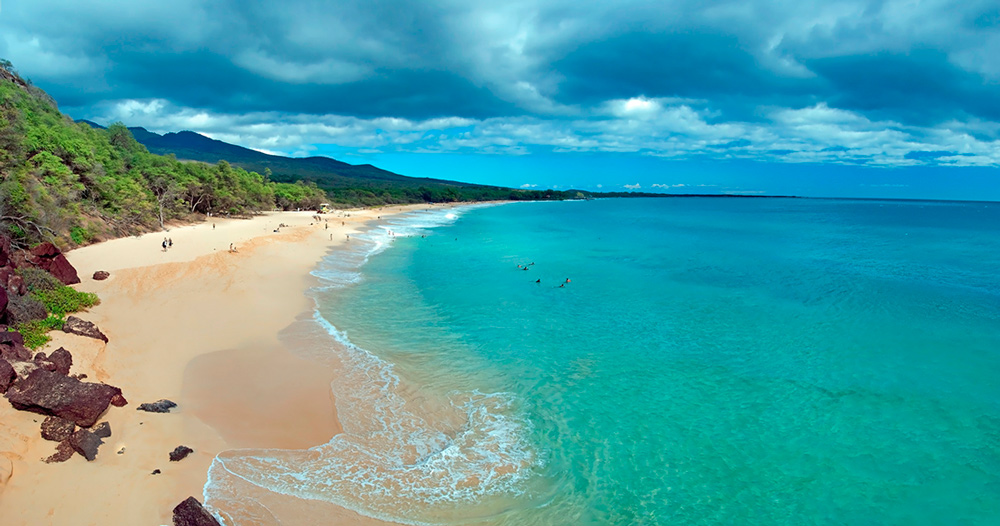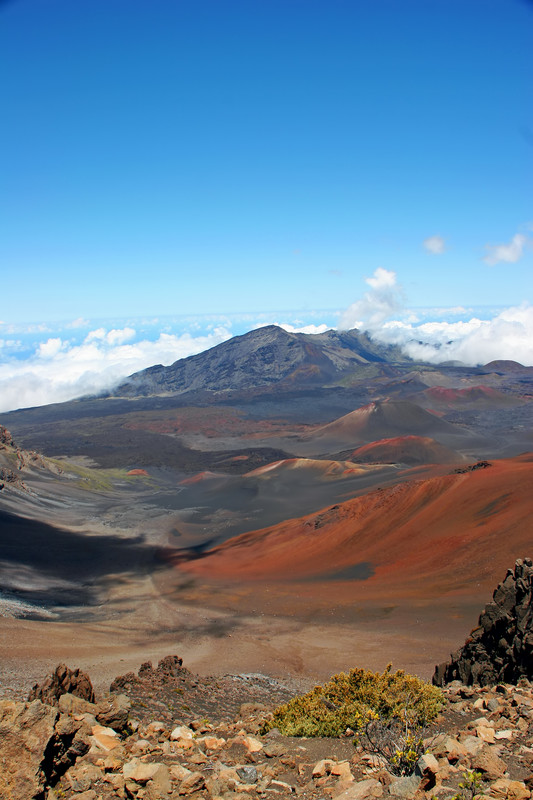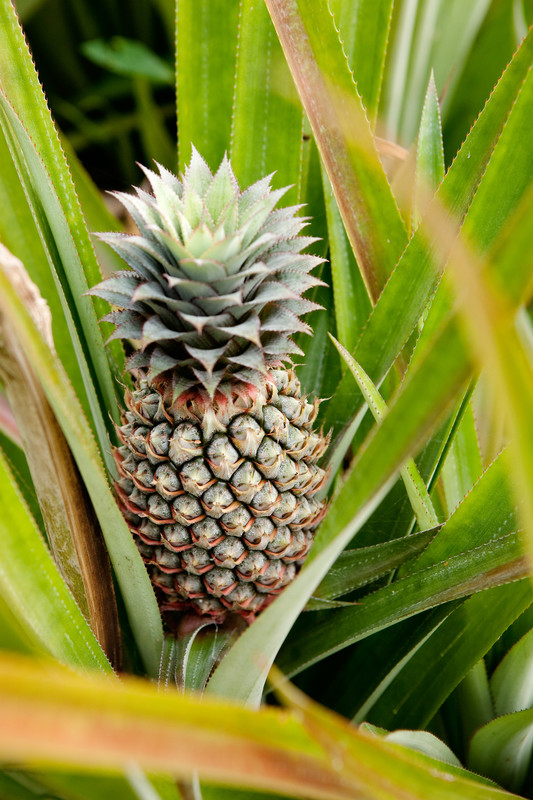Destination Maui
Everything you imagine when you think of Hawaii, you will find on the
island of Maui. It is the second largest island in the archipelago at roughly 729
square miles with an average sea level temperature of 70ºF - 87ºF. Maui has 30 miles of white, red, and black sand beaches; 80 beaches in total.
Maui is a true island paradise. Towering into its vivid blue skies is the world’s largest extinct volcano, Mount Haleakala, rising over 10,000 feet from sea level. To the west are the majestic Maui Mountains. Upcountry, ranchlands sweep down to lush forests and valleys, glistening with streams and waterfalls, and brilliant with exotic flowers.
Just offshore lies the tiny islet of Molokini. The rim of a submerged volcanic cone, Molokini is a marine preserve -- its crystal waters teeming with a flamboyance of tropical fish, make it the best area in Hawaii for snorkeling. In winter months, Maui is the perfect area for watching the return of humpback whales to their spawning grounds.
Whaling, Sugar, and Tourism
In 1819, the first whaling ship dropped anchor in Lahaina. Sailors were looking for fresh water and supplies, but they found beautiful women, mind-numbing grog, and a tropical paradise. A few years later, in 1823, the whalers met rivals for this hedonistic playground: the missionaries. The God-fearing missionaries arrived from New England bent on converting the pagans. They chose Lahaina because it was then the capital of Hawaii.
The missionaries clothed the natives, banned them from dancing the hula, and nearly dismantled their ancient culture. They tried to keep the whalers and sailors out of the bawdy houses, where a flood of whiskey quenched fleet-size thirsts and where the virtue of native women was never safe. They also taught reading and writing, created the 12-letter Hawaiian alphabet, started a printing press in Lahaina, and began writing the islands' history.
Children of the missionaries became the islands' business leaders and politicians. They married Hawaiians and stayed on in the islands. It became fashionable to say of the missionaries, "they came to do good and stayed to do well."
In 1845, the capital of Hawaii moved from Lahaina to Honolulu, for its more accommodating natural harbor. Whaling ships started skipping Lahaina for the larger port of Honolulu. Maui might have taken a back seat in Hawaii's history had it not been for the beginning of a new industry: sugar. Enterprising land-owners built irrigation ditches and negotiated "sweet" deals with the U.S. on prices and tariffs.
In 1959, the first jet airliners arrived on the island and the fledging tourism trade was begun. Wise plantation owners quickly recognized the new opportunity and began developing and promoting upscale resorts. At the beginning of the 21st century, the visitor industry replaced agriculture as Maui's number-one industry. Maui is now the second-largest visitor destination in Hawaii.
Wailea, where we'll be staying, is located on the southwestern coast of Maui and is the sunniest, driest area of Maui. Started as a fishing settlement, Wailea is now known for its five spectacular, golden sand crescent-shaped beaches, its stellar golf courses and its clear views of neighboring islands Lanai, Molokini and Kahoolawe. Wailea beach, which is consistently rated one of the world’s best beaches, is the perfect place to swim, snorkel around the natural lava rock still found there or sit back and enjoy glorious ocean views.
![]()


